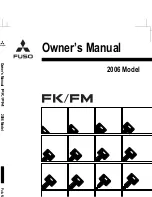
7. If the lithium-ion battery fails and cannot be
used, remove it from the vehicle. Trained per-
sonnel can use our BMS special reading in-
strument to read the information and make a
preliminary judgement. For problems that can-
not be solved, please contact the after-sales
service department for a solution;
8. Before installing and removing the battery,
be sure to read the user manual. The weight
of the battery body is evenly distributed. If
there is an external weight, pay attention dur-
ing installation and removal. When lifting, hook
two slings to the eyelets, gently lift and keep
the battery stable without tilting it; Make sure
that the lifting gear is suitable in terms of size
and load capacity. Observe the battery weight
given on the battery nameplate).
9. The operator must carefully read the in-
structions before use and undergo relevant
safety training in order to deal with any unex-
pected situations;
First aid measures after a Li-ion accident
First-aid measures
WARNING
Risk of injury!
Escaping gases can lead to breathing difficulties.
–
Course of action required if gases or liquids
escape. Immediately ventilate the area or
go out into the fresh air; in more serious ca-
ses, call a doctor immediately.
–
Skin irritation can occur in the event of con-
tact with the skin. Thoroughly wash the skin
with soap and water.
–
Eye irritation can occur in the event of con-
tact with the eyes. Immediately rinse eyes
thoroughly with water for 15 minutes, then
consult a doctor.
Charging
1. The battery can only be charged using the
vehicle-specific charger. Other chargers may
cause battery damage;
2. The normal charging temperature range of
the battery is 5°C–40°C. Do not charge in an
environment that exceeds the normal temper-
ature range;
3. If charging is not completed within the
specified time, stop charging the battery;
4. Professional personnel must be on hand to
carry out and oversee charging operations, in
order to ensure that the charging plug and
socket work normally without overheating, the
charging equipment works properly, the bat-
tery pack and its protection circuit work prop-
erly, and the entire power supply system
shows no signs of short circuit, overcurrent,
overtemperature and overcharging.
5. When charging and maintaining the battery,
observe the manufacturer's maintenance in-
structions for the battery and battery charger.
DANGER
Never overcharge or over-discharge the lithium-ion
battery.
CAUTION
1. The normal battery charging temperature range is
5°C–40°C.
2. The voltage difference between the maximum and
minimum cell voltages during charging is less than
0.1 V.
3. The voltage of the lithium-ion battery matches the
charger voltage.
4. The charger should periodically check the charg-
ing overvoltage protection device.
Operation
4
Lithium-ion battery appendix
75
5001 801 1532 EN - 10/2021 - 03
Summary of Contents for ECH 12C
Page 2: ......
Page 4: ......
Page 9: ...1 Foreword ...
Page 22: ...Foreword 1 Environmental considerations 14 5001 801 1532 EN 10 2021 03 ...
Page 23: ...2 Safety ...
Page 43: ...3 Views ...
Page 51: ...4 Operation ...
Page 90: ...Operation 4 Equipment scrappage and disposal procedure 82 5001 801 1532 EN 10 2021 03 ...
Page 91: ...5 Maintenance ...
Page 105: ...6 Technical Data ...
Page 106: ...Technical datasheet Technical Data 6 Technical datasheet 98 5001 801 1532 EN 10 2021 03 ...
Page 113: ......






































